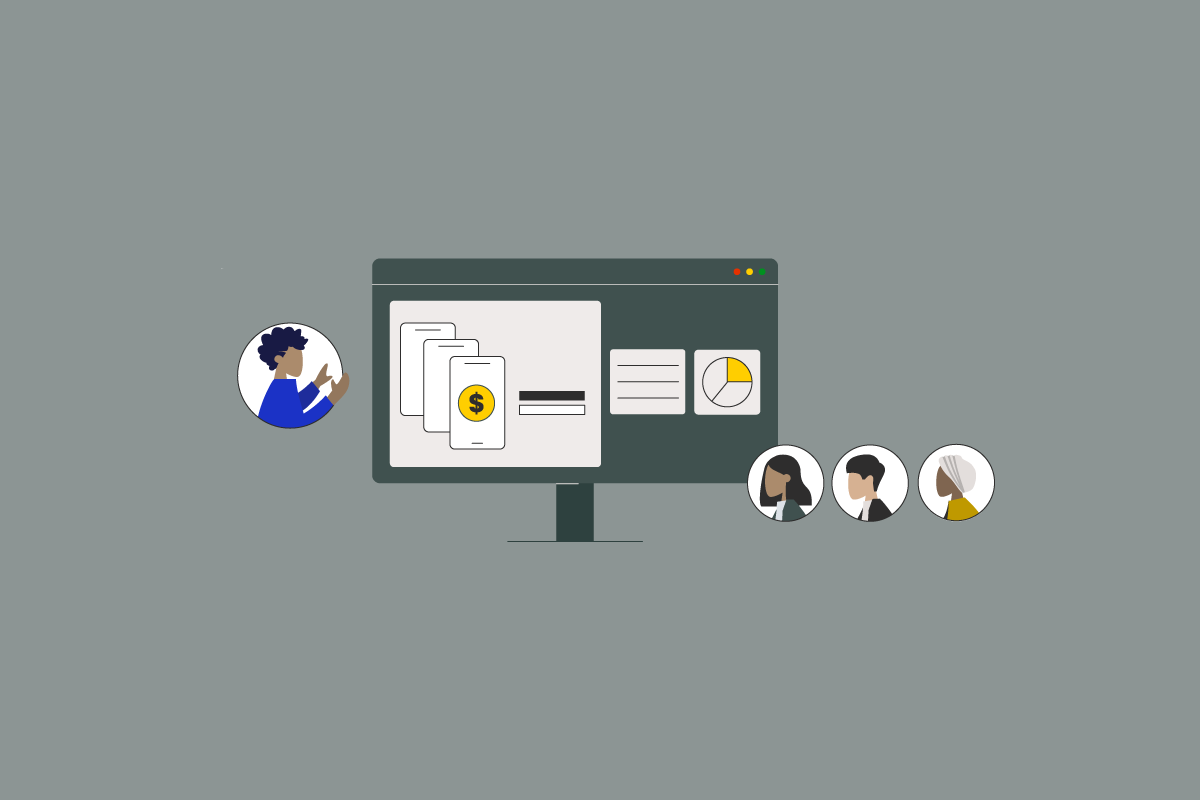Blog
How to pitch open banking payments to the C-Suite
February 23, 2023
Editorial Team

If you are a product or eCommerce manager looking at how to bring more revenue into your business, open banking payments can offer a compelling opportunity.
But if your checkout has a standard mix of cards, wallets, and maybe BNPL, and more or less “works” from a business perspective, how do you get management buy-in to invest and integrate a payment method that is relatively unknown — particularly when there are many other priorities?
We are going to discuss how to walk in prepared to pitch open banking and make a strong business case to your C-suite, complete with some common questions and how to answer them.
1. Show that payments are a strategic advantage with a direct impact on revenue
When talking to the C-suite, it is important to have a strategic point of view. Fortunately for you, payments are not only a critical piece of digital infrastructure for any business that sells online, but they are also a crucial touchpoint in the customer journey and directly tied to revenue.
Your business likely invests significant amounts in marketing and/or sales and tracks the funnel from awareness to conversion. The narrowest part of the funnel — the moment of truth of the entire customer journey — is the payment. This is the moment when all that investment in marketing, sales, and product converts to revenue. But with an average cart abandonment rate persistently high at 70%, and 17% of US online shoppers abandoning an order solely due to a “too long/complicated checkout process”, a seamless payment experience is mission-critical. If there is a problem at the checkout, even if it is something out of your control like the customer’s credit card has expired, all your sales and marketing investment goes up in smoke.
So getting payments “right” is not a nice-to-have, it’s fundamental to the success of the business that is measured in dollars and cents.
2. Look at the baseline data
Now that you have set up payments as a strategic imperative, you need to show the cost of business as usual.
No matter how well-optimized your checkout page and mix of payment methods is, there is always room for improvement. Before going into your C-suite discussions, look at your payments data and start answering key questions around the following:
What is your conversion rate on the checkout page?
How much do card swipe fees cost your business?
How much does payment fraud cost your business?
How much do other payment methods — wallets, BNPL, and so on — cost in fees?
If you are a subscription company, what is your rate of involuntary churn due to expired, lost, and stolen cards?
Pull these figures together and to help answer two key questions:
How much do payments cost in fees?
How much revenue do you lose through too much friction at the checkout, fraud, expired cards, and/or failed subscriptions?
These costs represent your opportunity.
3. Apply educated assumptions to what may happen if you offer open banking payments as an option
Once the cost of business-as-usual is established, you can show the potential of a better way.
Of course, building your assumptions here will depend on your current mix of payment methods. A quick way to compare open banking payments to cards is to use the calculator on the Link Money homepage. If you want to take a more sophisticated approach, you might want to run the numbers against the fees for wallets and BNPL also. And if you are a subscription merchant, you should look at a scenario where you reduce your involuntary churn rate — possibly by a significant percentage. This is because open banking payments do not involve cards — the payment is initiated from the customer’s bank account directly, and bank accounts do not get lost, stolen, or expire. Note: there IS still a possibility of insufficient funds causing involuntary churn. However, open banking providers such as Link can retry transactions, meaning if there are insufficient funds today, there is still a strong chance that you will get your subscription revenue at a later date.
Once you have these figures together, you can show: a few different scenarios, such as:
Several scenarios depending on different percentages of customers using open banking payments if you offer it (for example conservative estimate is X%, realistic estimate Y%, ambitious estimate Z%).
Your implied savings against last year’s costs with these percentages, plus, if you have growth projections, how much you could gain over three and five-year time frames.
Now you can demonstrate a compelling business case.
4. Pitch other open banking USPs, including customer experience and security
Once the business case is clear, you should have some interest in other aspects of open banking payments. You may be getting other questions, such as:
“Will our customers really pay this way?”
“Are there any security considerations?”
“Is this payment method proven elsewhere?”
This is a good sign, but it’s critical to be prepared for them!
First, the customer experience. This is a particularly strong point of open banking as a payment method, as the customer is simply redirected from the checkout page to their bank environment to authenticate the payment — no cards, sign up, or unexpected fields to fill in at all, making it substantially faster and simpler than card payments. You can even show a sample flow with the below gif!

And second, security. When done right, open banking is significantly more secure than card payments, since bank accounts cannot be stolen or lost in the way credit card numbers can. However, merchants do need to be aware of how the open banking provider accesses bank data. As long as they follow best practices — including avoiding potentially insecure data collection practices such as screen scraping and reverse engineering — open banking payment will result in reduced fraud as well as transaction costs.
5. Talk about adoption rates in other markets
Another potential question you will face will be around customer adoption. The business case and customer experience look strong, but will your customers really pay this way? Or are cards and wallets too entrenched in US payment culture for open banking to make much headway?
Open banking is relatively new to the US, so it is difficult to find objective growth figures from this market. But what you can do is look at other markets that are a little more mature in terms of adoption to see what kinds of growth rates they are experiencing.
For this, we can look at the UK as an indicator. As arguably the leader when it comes to open banking innovation globally, as well as a card-dominated market that is quite similar to the US in terms of payment methods, it is a decent proxy to measure how fast open banking payments could grow in the US.
According to the UK’s Open Banking Implementation Entity (OBIE) the number of successful payment initiations made by open banking providers using bank APIs increased from under one million in November 2020 to over seven million in November 2022.

This 7x increase in two years demonstrates that hockey stick growth is absolutely possible, and could be repeated in the US.
Furthermore, it may be worth pointing out that just a decade ago, BNPL was virtually unknown, but by 2021 had reached $120 billion in transaction value. There is a market out there for open banking payments, particularly as awareness of the costs and inconvenience of cards increases.
Educating your customers
That said, there is currently a consumer awareness gap with open banking payments. As a trusted merchant, you are strongly positioned to educate your customers on why open banking payments are beneficial to them, and/or incentivize them to use it. After all, using open banking lowers the cost of doing business for you, and reduces the hassle and risk of fraud for them. Adoption will be much faster if you advocate for it.
Outsized gains await early adopters
Open banking is far more sustainable, ethical, and efficient than existing payment methods, and — through providers such as Link — the infrastructure is ready today. If you want to convince your C-level management to make a decision fast, one more thing to add to the conversation is this: the faster you start offering open banking payments to your customers, the faster you will start saving money on unnecessary swipe costs and other fees. So not only are there multiple advantages to incorporating open banking into your payments strategy, but there is also a cost to not doing it quickly.
To find out more about what you can achieve, contact us.